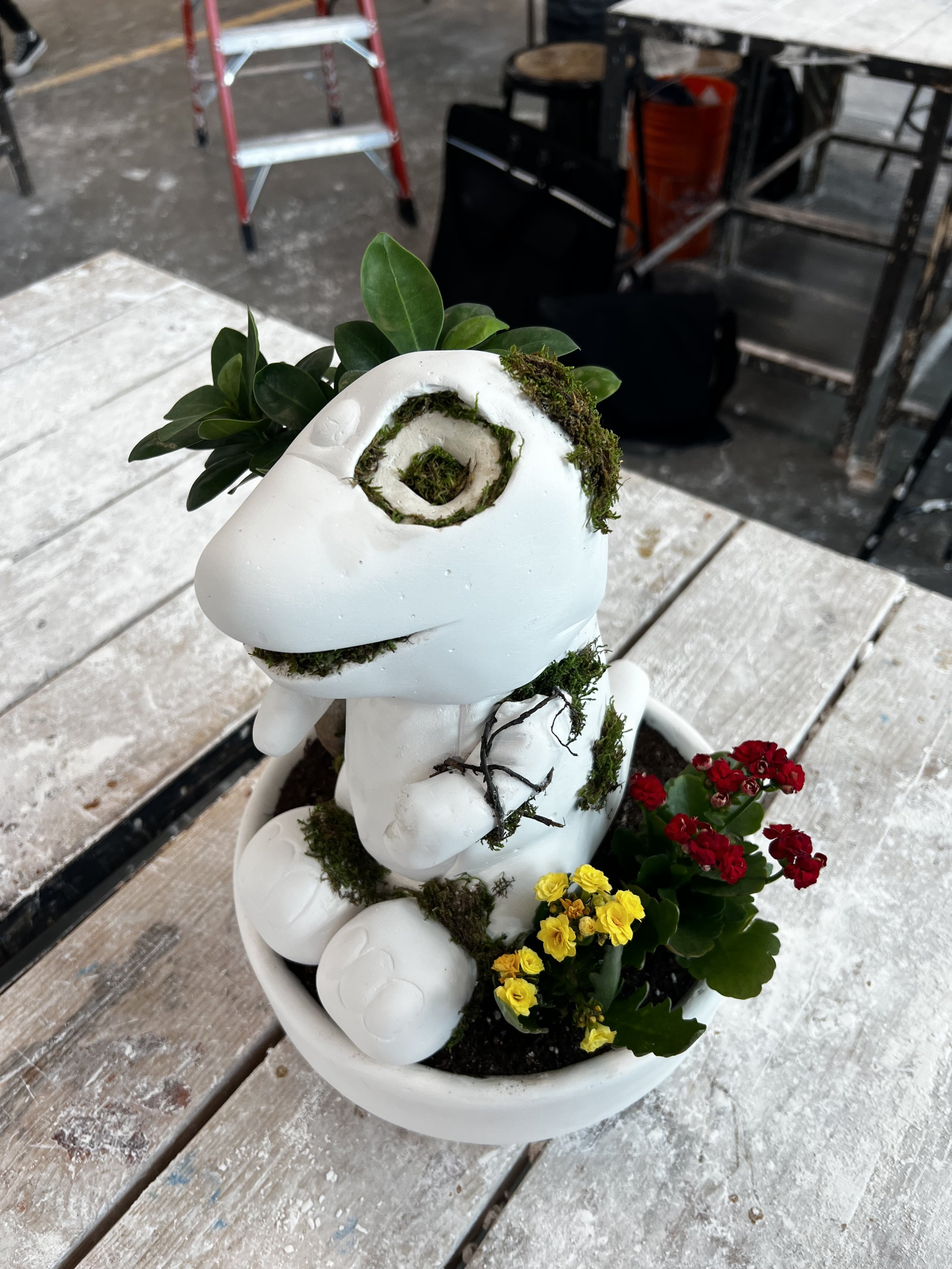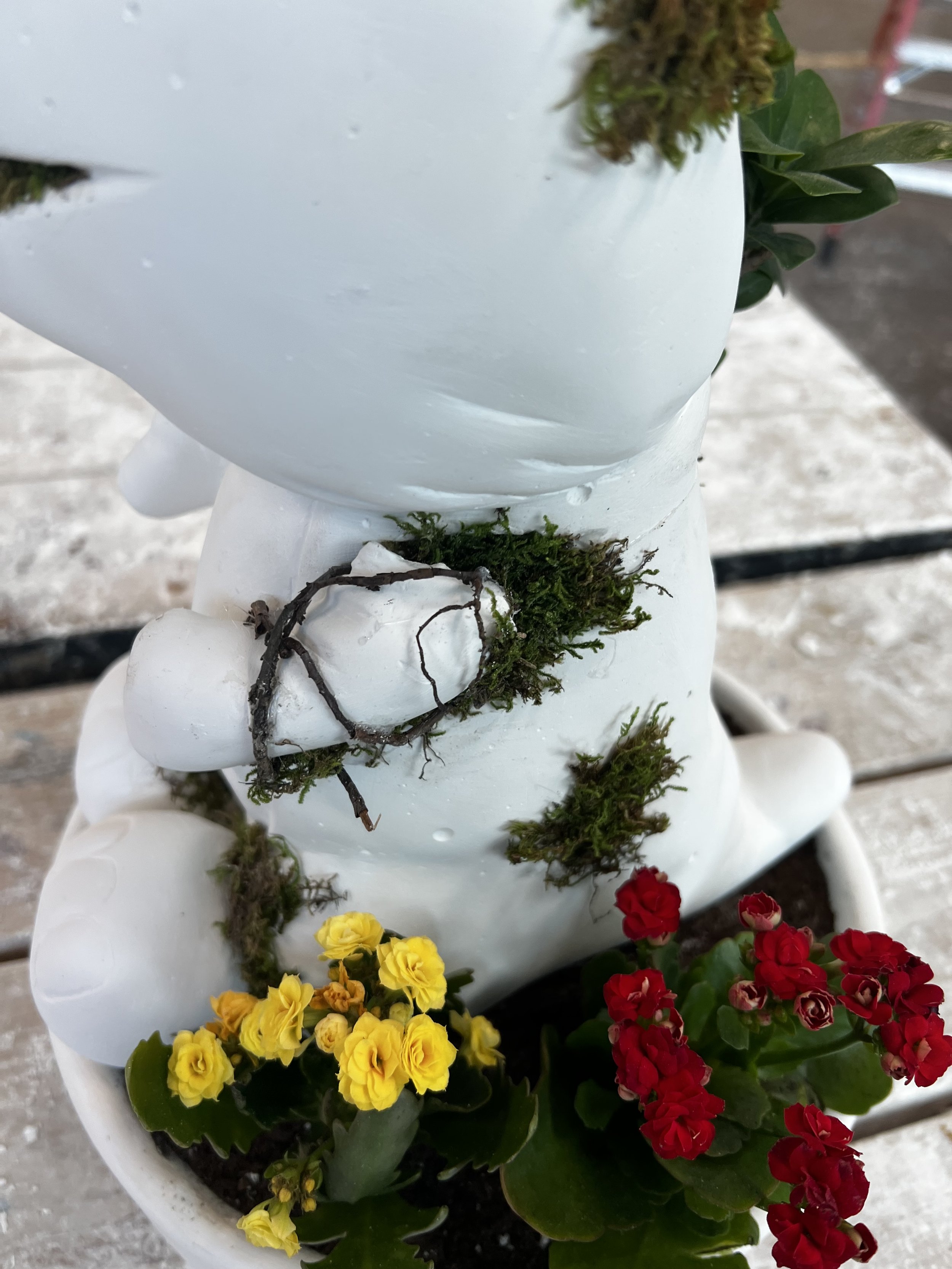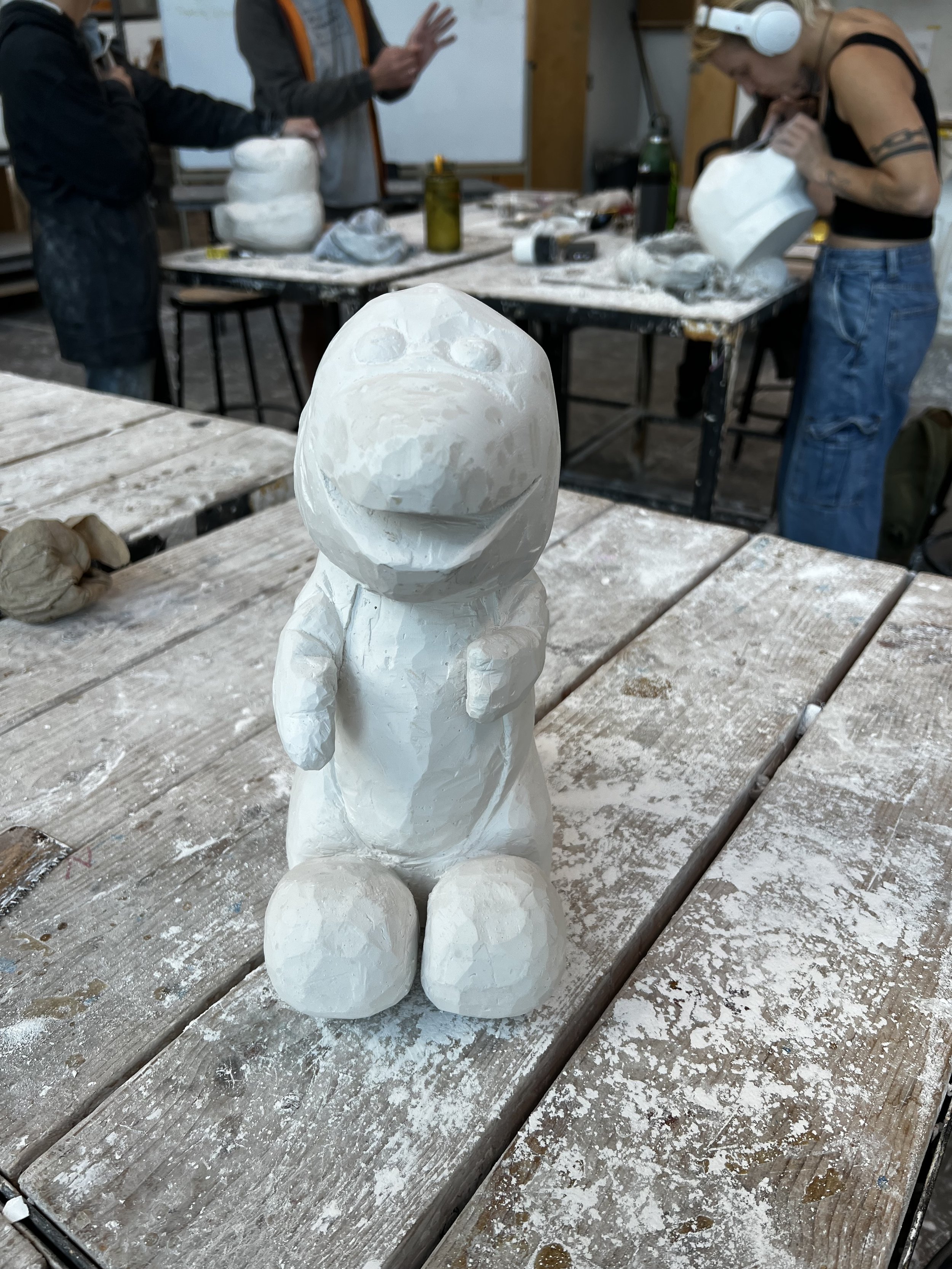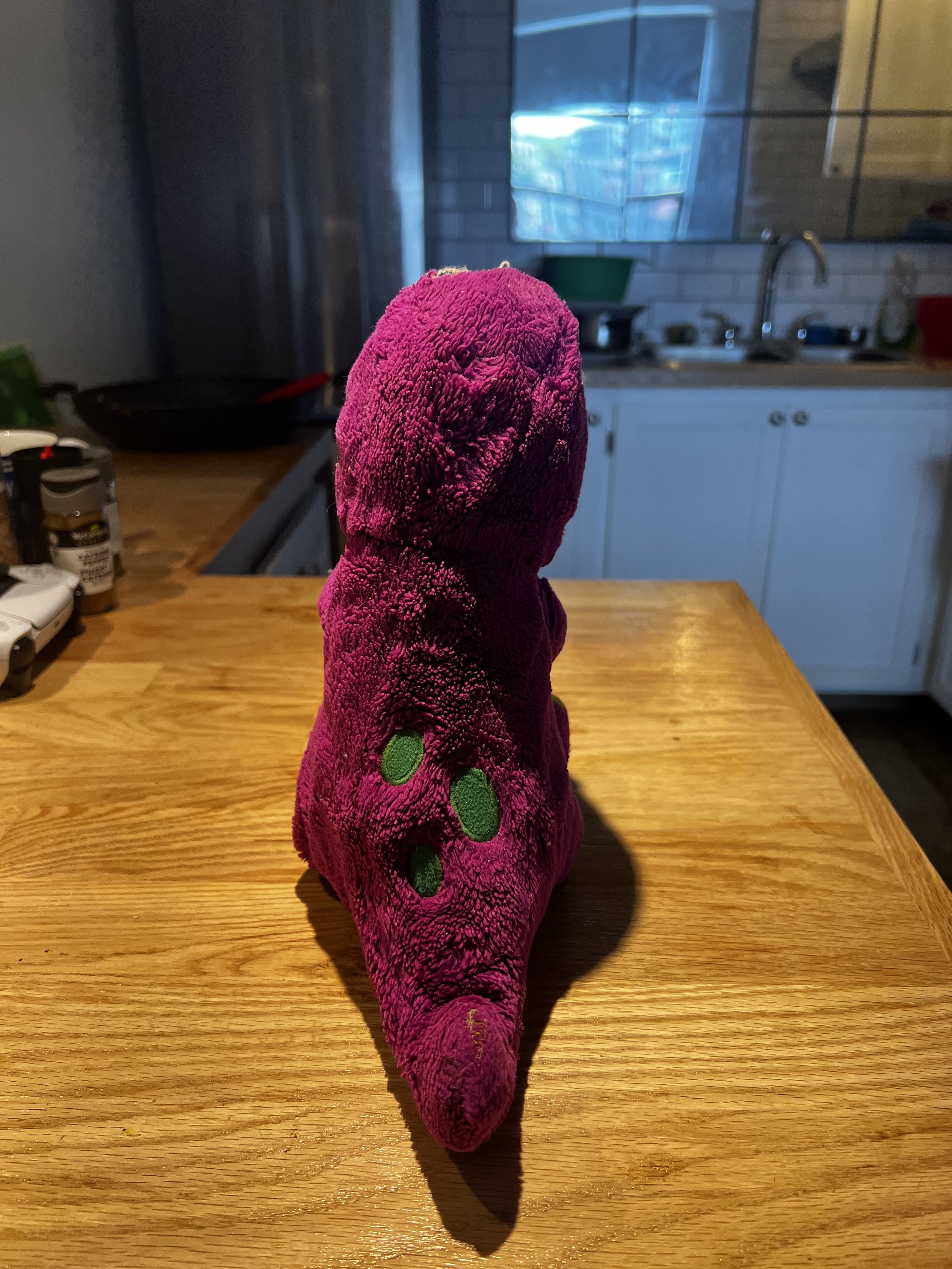Lost in the garden
Lost in the garden encapsulates the fragile intersection of lost innocence and time. Carved from plaster, the stuffed dinosaur appears lifelike, its worn surface indicating years of neglect. Cracks mark its body, revealing hollow spaces that nurture emerging plants. Vines and moss envelop the figure, symbolizing nature's reclamation of the once-soft comfort. The stuffed animal transforms into a vessel of life, representing both the loss of innocence and the relentless passage of time. This piece highlights the inevitability of change, the fading of youthful wonder, and the tension between holding on and letting go, reminding us that traces of the past persist, evolving alongside nature.
The weight of the world presses on his shoulders,
a thousand little tasks, each one heavier than the last.
He moves through the motions—paying bills, washing dishes,
sweeping up the mess of his life that’s never quite where he thought it would be.
The voice in his head, louder then ever,
the one that tells him he’s falling behind, that everyone else has figured it out,
while he’s still stuck, fumbling with the basics, always running out of time.
Outside, he stumbles into the garden, seeking something he can’t name.
The earth smells like old rain, and there, half-buried in the roots, he finds it—
his childhood-
tattered, forgotten,
a stuffed animal he thought was lost forever.
The moss has grown through the seams, its fur knotted with time,
one eye gone, the other lost forever.
He hesitates,
then picks it up.
His hands tremble,
not sure why it feels like finding something he was never meant to lose.
For a moment,
he holds it against his chest, the weight of it familiar, like an old comfort he forgot existed.
And in the quiet, as the world spins around him, he allows himself to be broken, to be soft.
To remember that he once believed things could be whole again.
He doesn’t know how to fix himself,
but for the first time in a long while,
he feels a part of him that’s still worthy of repair.











